Boiling Point: Change change, the everything story
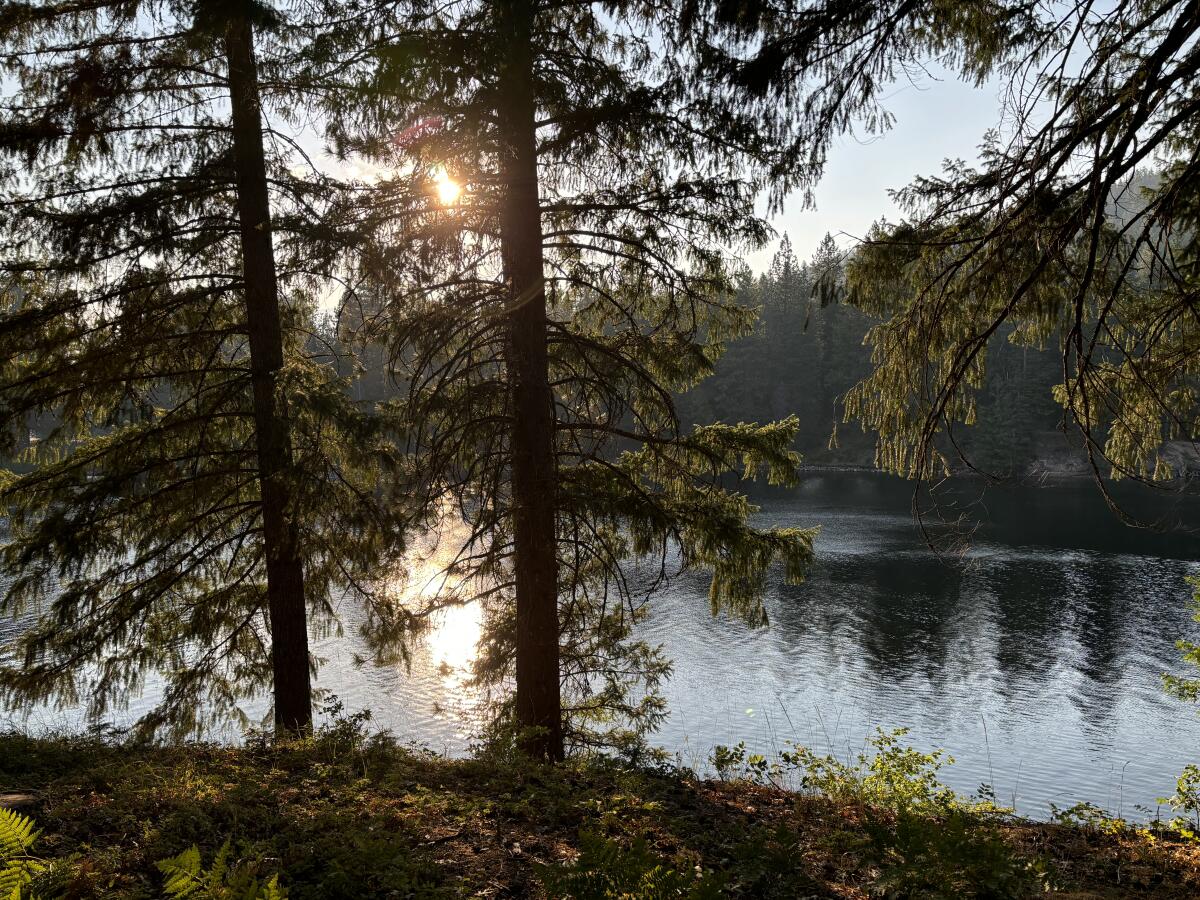
- Share via
A week ago Sunday was the hottest day ever recorded on Earth. Then Monday was hotter.
I was on vacation, hiking near the headwaters of the Sacramento River and lounging along the shores of nearby Castle Lake. But as usual, the climate crisis was on my mind. Partly because it was so damn hot, with temperatures exceeding 100 degrees. Partly because I finally finished reading “The Power Broker,” a book about the many harms of freeway construction. And partly because of President Biden’s decision not to seek reelection — a decision that could have huge implications for our planet’s future.
It’s hard to escape the story of climate change. It’s everywhere, all the time.
You're reading Boiling Point
Sammy Roth gets you up to speed on climate change, energy and the environment. Sign up to get it in your inbox twice a week.
You may occasionally receive promotional content from the Los Angeles Times.
It lingered in the air on my vacation, in the form of wildfire smoke obscuring views of Mt. Shasta’s snow-covered 14,179-foot peak. Global warming isn’t responsible for every fire, any more than cars are responsible for every traffic death.
But rising temperatures raise the odds of bigger, more destructive blazes. Blazes such as the Shelly fire, which obscured views of Mt. Shasta — or the Park fire, California’s largest of the year so far, which had burned 370,000 acres as of Monday afternoon after several days of explosive growth, spawning a “firenado” and prompting orders for thousands to evacuate. Or the Borel fire, which destroyed the historic Kern County mining town of Havilah, as L.A. Times photographer Robert Gauthier documented in images.
Even if you don’t live near one of the fires, they can still hurt you. My colleague Alex Wigglesworth wrote about startling new research finding that wildfire smoke can increase your risk of getting dementia even more than other types of air pollution.
So that’s not great.
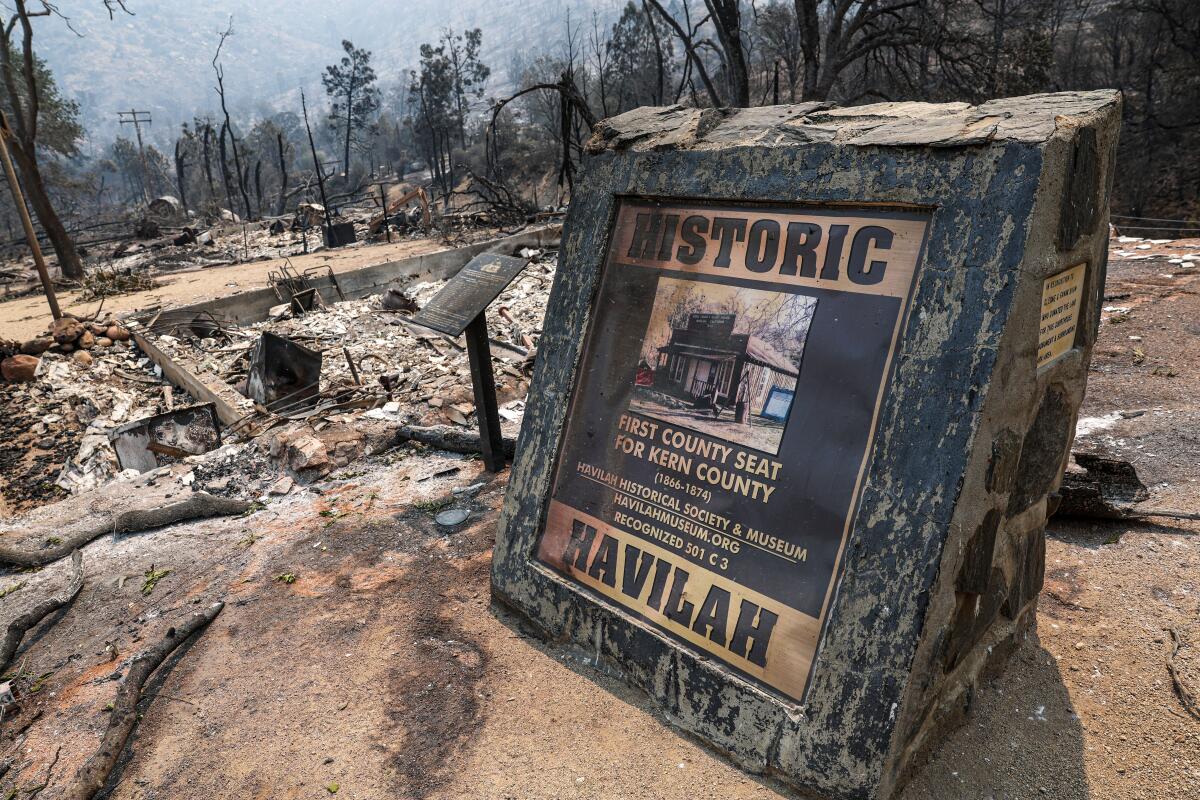
On a brighter note, my vacation gave me opportunities to think about climate solutions too.
Just before driving up the 5 Freeway to Northern California, I was pleased to learn via this story by my L.A. Times colleague Russ Mitchell that Starbucks and Mercedes-Benz plan to install electric vehicle charging stations at 100 coffee shops up and down the 5, starting in 2025. The fast chargers hopefully will make it a lot easier to traverse the Golden State without guzzling gasoline.
A few days later, while hiking to Cedar Lake — which feeds into the Sacramento, whose waters are eventually funneled hundreds of miles south to my apartment in Los Angeles — I passed a felled tree on which someone had scrawled, “470 / 1553,” seemingly indicating it started growing half a millennium ago. Other trails featured piles of chopped logs, just sitting there, ripe to burn.
More recently, I read a fascinating story by Kylie Mohr for Grist about the emerging science of “wood vaulting” — burying leftover logs from forest thinning projects that are too small to be sold, to make sure they don’t burn later and add to global warming.
Pretty cool, right?
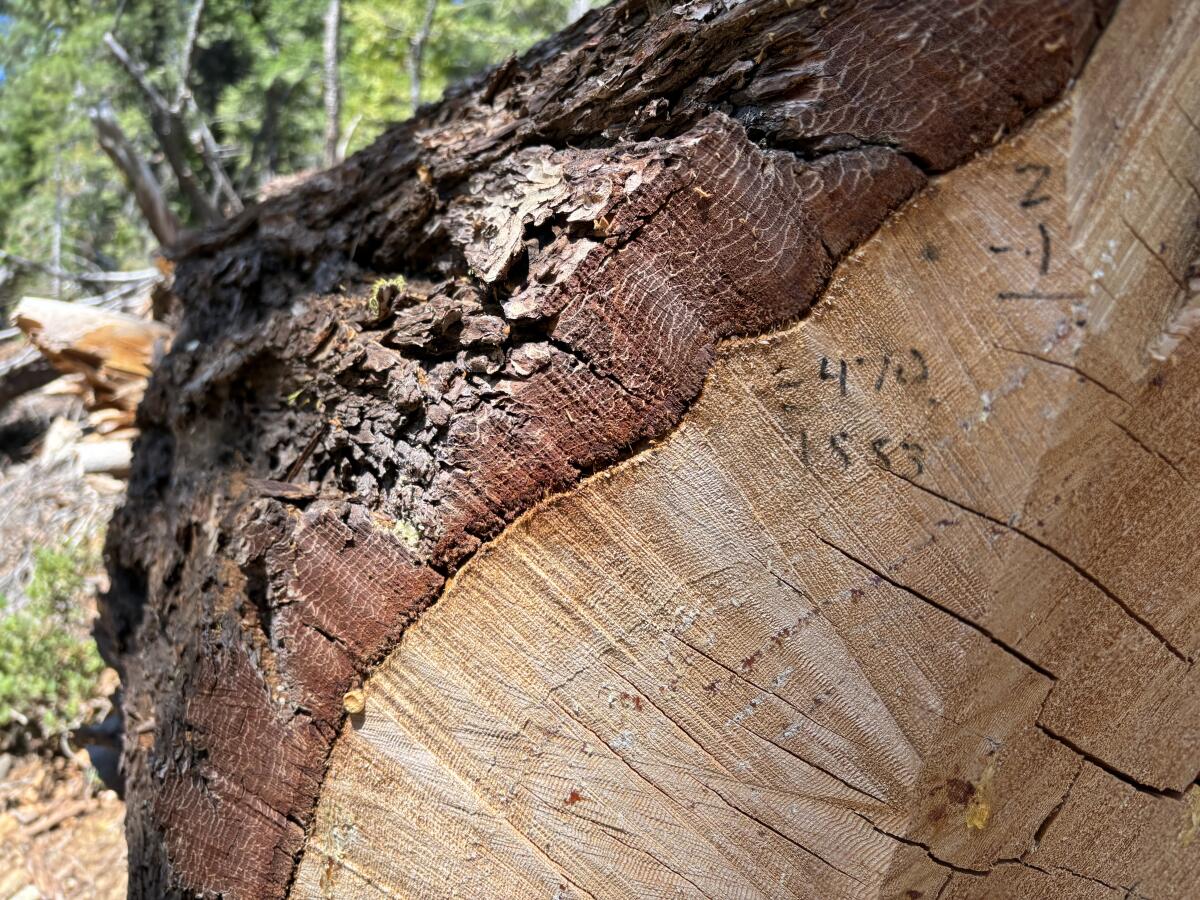
I also had a chance to visit Iron Gate Dam — or at least, the former site of Iron Gate Dam.
It’s one of four hydroelectric facilities on the Klamath River that are being demolished, in the largest dam removal in U.S. history. After visiting the site in 2022, it was amazing to see how much had changed. The huge wall of dirt that had blocked the waterway is now mostly gone. Instead of a giant reservoir, there’s a free-flowing river, with native vegetation planted along its banks.
Trucks rolled by, carrying the remaining dirt from the dam. The San Francisco Chronicle’s Kurtis Alexander reports that the overall Klamath River project is ahead of schedule, with all four dams on track to be demolished by late August or early September.
As I’ve written previously, hydropower dams can help solve the climate crisis by generating low-emissions power. But they also wreak havoc on ecosystems, decimating salmon runs that have long sustained Indigenous tribes, among other harms.
For in-depth coverage of the Klamath River dam removals, read this fabulous story by my L.A. Times colleague Ian James.
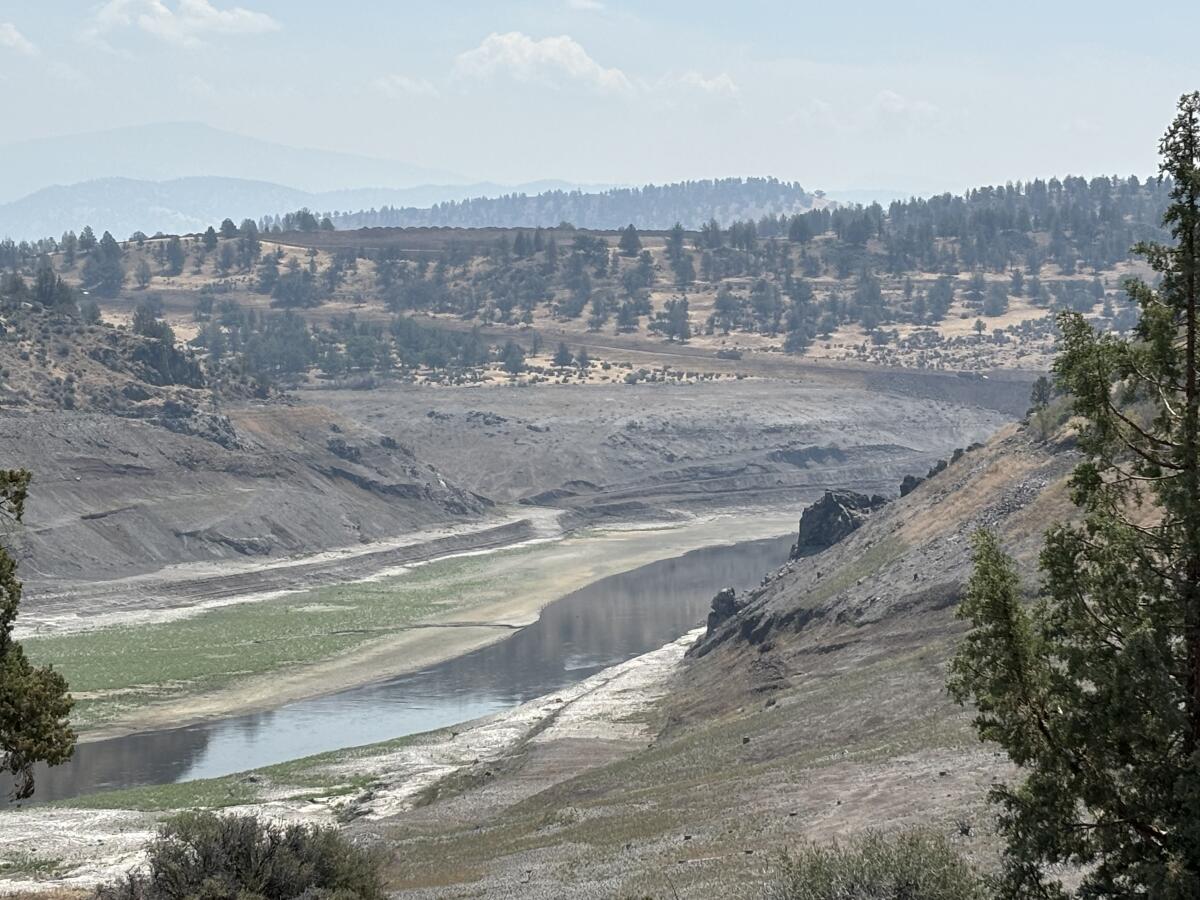
By the way, did I mention it was hot while I was traipsing around Northern California?
It’s been hot all over the place, and so long as we keep burning fossil fuels, it will only get hotter. In Las Vegas and Phoenix, it’s been so hot that on some flights operated by Southwest Airlines — remember, the airline that used to let you sit wherever you wanted? — that heat is causing soda cans to explode upon opening, injuring flight attendants. It’s been so hot that a guy at Death Valley National Park melted the skin off his feet while hiking on sand dunes after losing or breaking his flip-flops.
It’s getting so hot that when you read about parts of California experiencing 156 consecutive days of temperatures at or above 90 degrees in 2022 — seriously, how crazy is that?! — you have to remember that these “extremes” are the floor, not the ceiling.
So as valuable as it is that California officials have finally implemented rules to protect indoor workers from extreme heat, eight years after lawmakers ordered them to do so — details here from my L.A. Times colleague Suhauna Hussain — we need to move faster, both to protect ourselves from the heat and to get coal, oil, fossil gas and other polluting products out of our lives.
Fortunately, we’ve got ways to do it. As my vacation kept reminding me.

Sitting in the shade reading “The Power Broker” — journalist Robert Caro’s epic tale of Robert Moses, the infrastructure czar who basically ruled New York City during the mid-20th century — I couldn’t help but feel awed by Moses’ ability to get things built. This despite the fact that many of the things he built were smog-spewing freeways that displaced impoverished families and people of color, while doing nothing to solve traffic — inducing more traffic, in fact. This despite the fact that he neglected public transit.
As I’ve written previously, we can’t afford to repeat Moses’ mistakes. Sadly, California hasn’t learned that lesson.
Gov. Gavin Newsom’s administration, and many Golden State residents, continue to believe that expanding freeways can reduce congestion, despite a mountain of evidence that doing so only worsens traffic — and fills the atmosphere with heat-trapping pollution.
That said, we still need to build big things in this country — solar farms, wind turbines, long-distance electric lines. Not the Moses way, by crushing opposition and drowning out legitimate concerns from conservationists, rural towns and Native American tribes that worry about harm to wildlife, livelihoods and sacred sites. But by forging ahead with compassion, determination and a sense of purpose — the kind of purpose that Moses never lacked, even if his cherished causes were so often unjust.
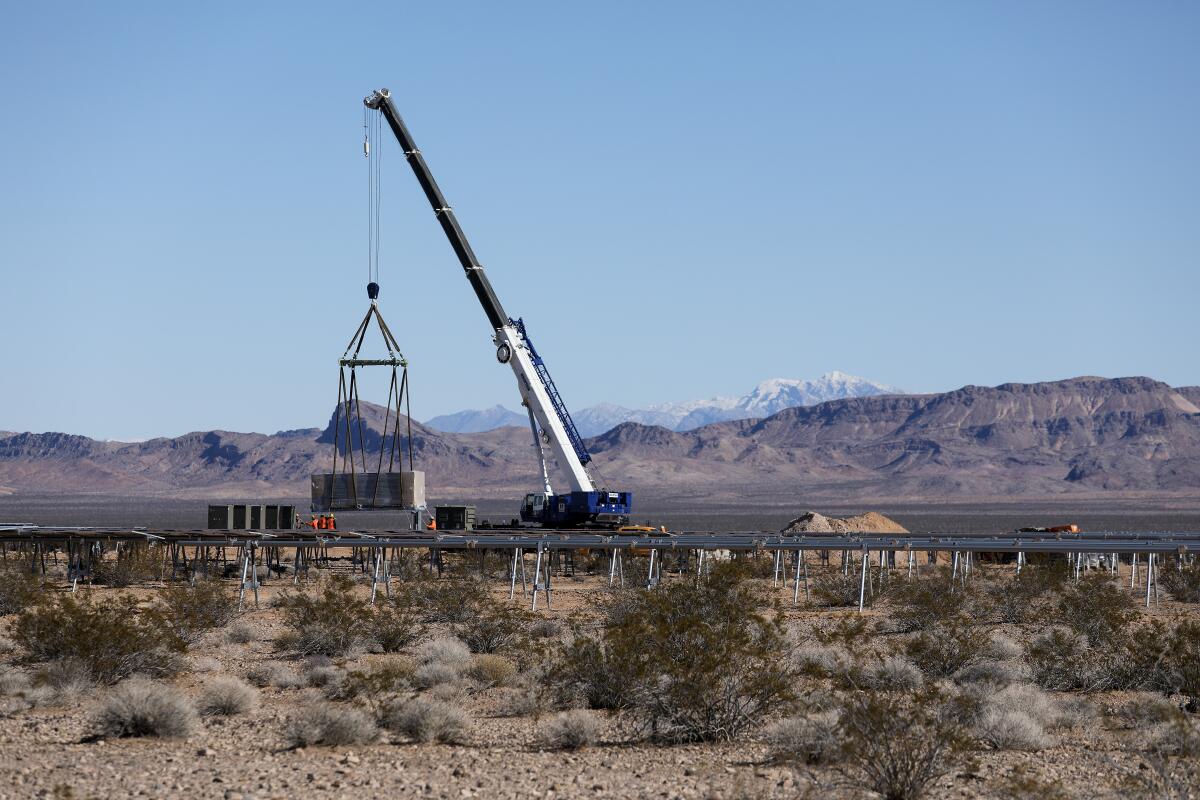
Sometimes it can be hard to tell the difference between right and wrong, at least without hindsight.
I was pleased, for instance, to read this month that one of the nation’s largest solar-plus-battery storage projects, called Gemini, is now operating on public lands in southern Nevada. I visited the construction site last year and wrote about how the developer was trying to balance climate-friendly energy production with the protection of wildlife habitat and historic landscapes.
I came away convinced that the developer was doing a reasonably good job of keeping desert tortoises and other wildlife out of harm’s way, and setting a decent example for other solar companies to follow. But I also interviewed thoughtful, well-informed conservation activists who disagreed. Some of them thought the developer shouldn’t be building in that spot at all.
Solar farms have to go somewhere, at least if we want to stop climate-fueled heat waves and wildfires from getting even deadlier. Some of them might be built in places already damaged by mines or other resource extraction, rather than pristine habitat. A new report from the Nature Conservancy identifies nearly nearly 400,000 acres of degraded lands in Nevada that might be suitable for renewable energy, as Amy Alonzo reports for the Nevada Independent. That’s not nearly enough land. But everything helps.
Fifty years from now, will we wish we hadn’t built Gemini? If Earth is still amenable to human habitation, my guess is no.
Like I said, though, these judgments are easier with hindsight. Which is why heading to a movie theater to watch Chapter 1 of “Horizon: An American Saga” — Kevin Costner’s four-part, Civil War-era Western series — was such an intriguing experience.
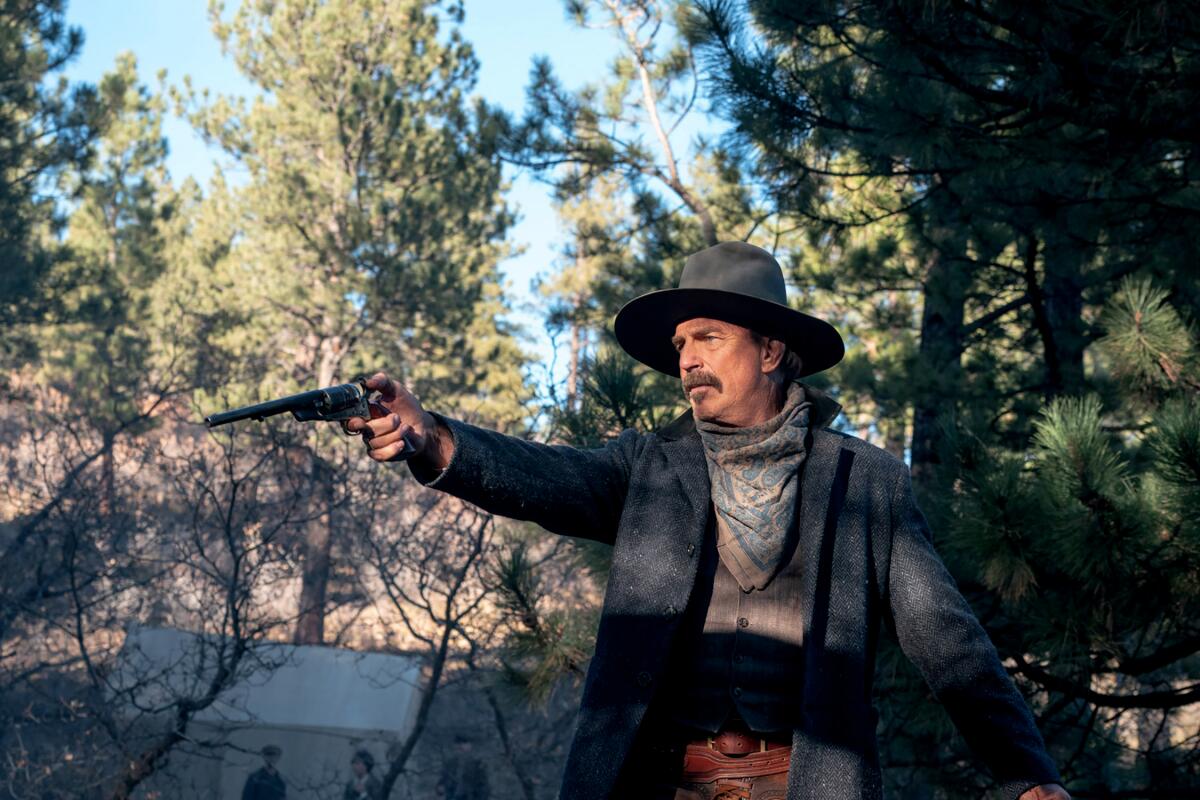
Much of the film takes place in Arizona’s San Pedro Valley, where American colonizers build a frontier town called Horizon along the banks of a desert river (which I’m guessing is the San Pedro, whose waters eventually drain to the Colorado). They clash with the land’s Indigenous inhabitants, the Apache, some of whom attack and burn the town. Some of the settlers retaliate.
With hindsight, it’s easy for me to say that the settlers shouldn’t have stolen land that wasn’t theirs. Even at the time, they should have known better. Whether the setting is 1860s Arizona or 1950s New York, displacement and murder are wrong, full stop.
But what really stirred me watching “Horizon” was the relevance to a modern-day renewable energy battle.
The 550-mile SunZia electric line, which will carry gargantuan amounts of wind energy from New Mexico to California and other Western states, started construction last year after spending a mind-numbing 17 years bogged down in government permitting. Why did permitting take so long? In part because conservation activists, Native American tribes and landowners along the route were concerned about environmental harms the wires might cause — a common holdup for renewable energy projects.
And where was the final challenge for SunZia?
In the San Pedro Valley, of course.

Even with construction underway, the Tohono O’odham Nation and the San Carlos Apache Tribe have tried unsuccessfully to block SunZia in court, arguing that the power line will “cause irreparable harm to ancestral villages, sacred sites and burial grounds” where it passes through the San Pedro Valley, as Hayleigh Evans writes for the Arizona Republic. The tribes have been joined in their lawsuit by Archaeology Southwest and the Center for Biological Diversity.
Is this Western colonization all over again? Or — as the developer and federal officials have insisted — the kind of careful balancing of renewable energy development and conservation that will be crucial to confronting the climate crisis?
That’s a hard question for me to answer.
Here’s an easier one: What will it mean for the climate if former President Trump returns to the White House?
Catastrophe, almost certainly.
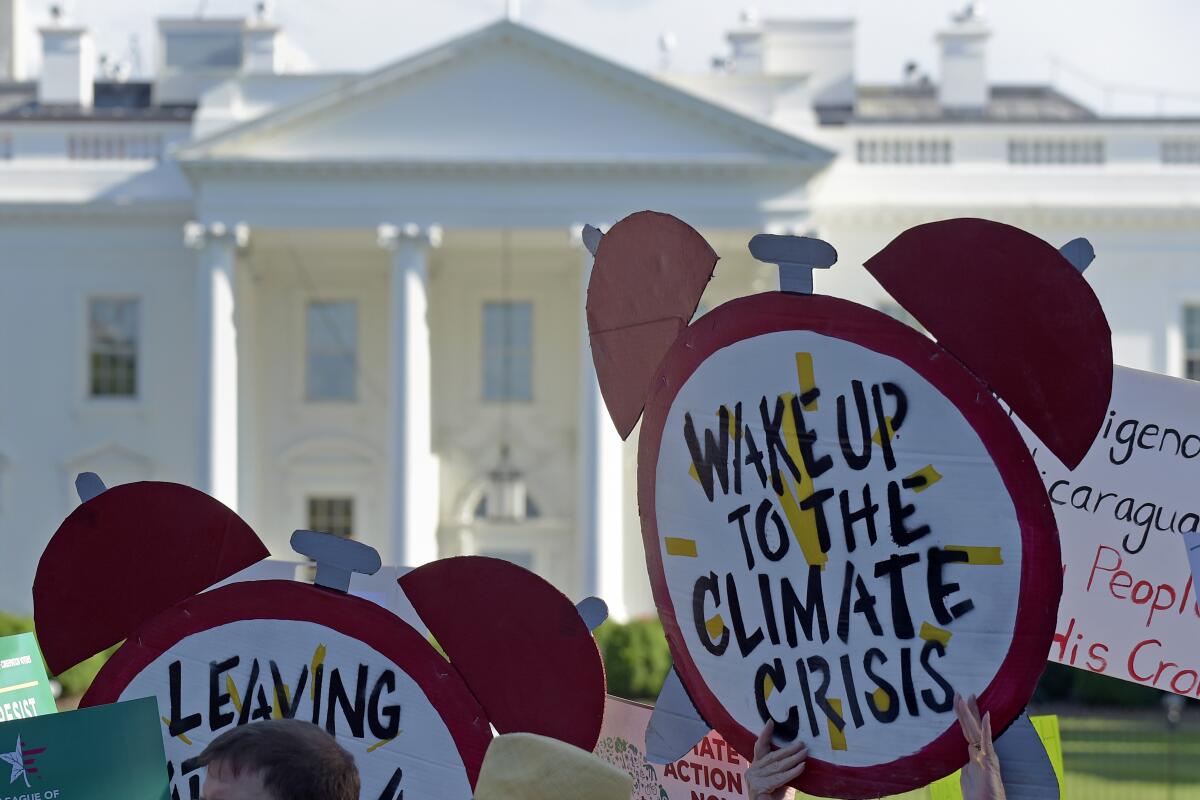
For a sense of what may be in store, check out this Western-focused rundown of the environmental sections of Project 2025 — a Trump second-term policy road map crafted by the conservative intelligentsia. Project 2025 also calls for dismantling the National Weather Service and the National Oceanic and Atmospheric Administration, some of the nation’s most reliable sources of weather and climate forecasts, The Times’ Hayley Smith reports — reflecting a dangerous attitude of “what you don’t know can’t hurt you.”
If that’s not bad enough, more than 20 Republican state attorneys general are urging the Supreme Court to overturn a Biden administration rule designed to slash climate pollution from coal and gas plants. Trump probably would throw out the rule himself.
Vice President Kamala Harris would do things a lot differently.
Environmental activists are thrilled at the prospect of Harris as president, pointing to her track record of climate justice work and aggressive efforts to hold oil companies accountable. Details here from my L.A. Times colleagues Hayley Smith and Ian James.
Will climate-focused voters, young voters in particular, ultimately have some of the same gripes with Harris as they had with her boss, President Biden? Maybe. But so far, I’m seeing almost uniform enthusiasm from environmental groups. Biden did more for climate than any other president, most notably signing the Inflation Reduction Act. But many activists weren’t excited about him. I’ll be curious to see whether his dropping out of the race ignites renewed enthusiasm in the climate movement to defeat Trump.

Whoever wins in November, effecting change will be a lot easier with strong local journalists to hold power to account.
For a striking example of what can go wrong in the absence of robust journalism, look to Richmond, Calif., where a literal oil company — Chevron — became the city’s main news source after all the local newspapers went out of business.
That story, by my colleague Jessica Garrison, is part of a new L.A. Times series on why reviving local journalism is so important.
Want to do your part? Subscribe to The Times, or if you live somewhere else, to your own local news organization.
Three months until the election. Six years until we need to cut emissions nearly in half, per the best available science.
Here are a few more stories I’m following:
THE ENERGY TRANSITION
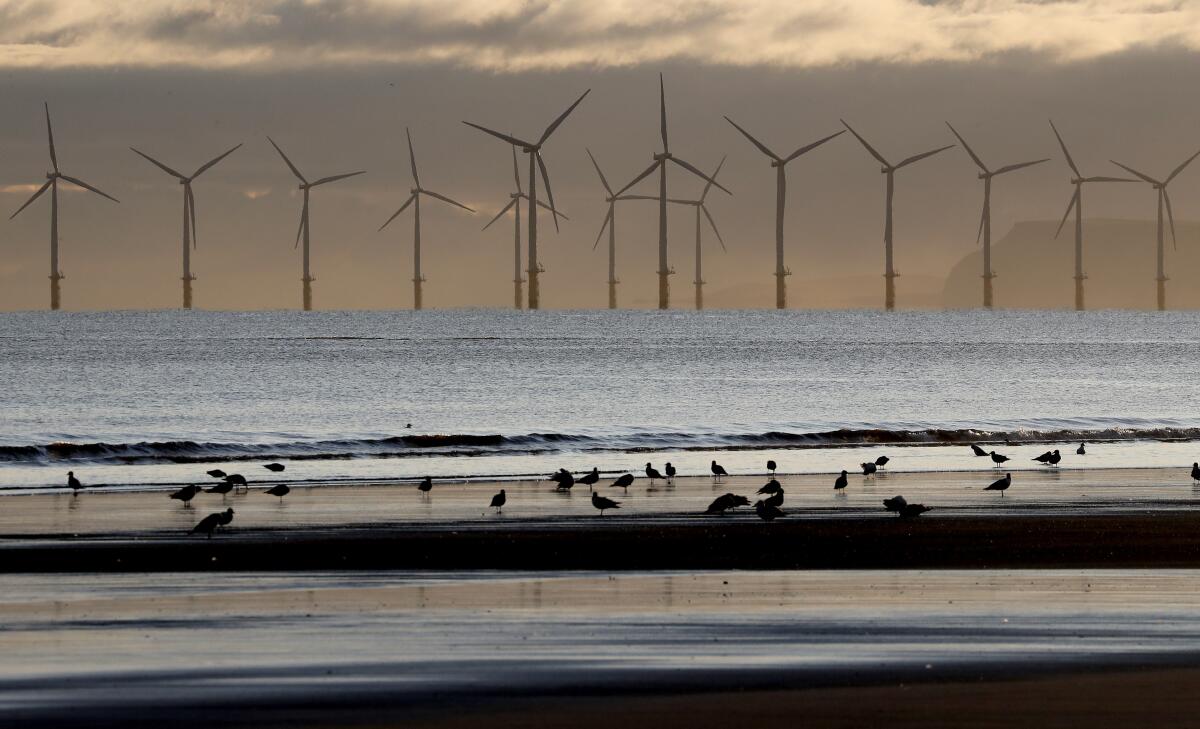
We all need reasons for optimism. Fortunately, there are plenty. Here’s some recent progress:
- The California Public Utilities Commission might authorize the state to buy 7.6 gigawatts of offshore wind power — a huge amount of energy. The purchases could jump-start the industry and bring down costs. (Story by Jeff St. John, Canary Media)
- Federal officials granted Southern California nearly $500 million from President Biden’s climate law to electrify cargo trucks, delivery vehicles and other equipment — the biggest-ever federal grant to combat air pollution. (Tony Briscoe, L.A. Times)
- L.A. Metro will use $77 million in federal funds on more electric buses before the 2028 Olympics (Rachel Uranga, L.A. Times)
- The Biden administration announced a goal to phase out single-use plastics across the federal government by 2035. Lest we forget, plastics are made in part from oil and gas, making them a major cause of climate change. (Susanne Rust, L.A. Times)
Optimism is key; so is realism. Here are some things going wrong:
- For all of California’s work to phase out fossil fueled electricity and gasoline cars, the Golden State has done basically nothing to shut down oil refineries — despite all the climate and air pollution they generate. (Liza Gross, Inside Climate News)
- Speaking of which, here’s a detailed portrait of how oil companies use campaign contributions and charitable dollars to enlist support from moderate Democrats in the California Legislature. (Laura Fitzgerald and Max Harrison-Caldwell, L.A. Times)
- California rooftop solar installers continue to suffer from incentive cuts ordered by Gov. Gavin Newsom’s appointees. The cuts have contributed to challenges at SunPower and Renova Energy. (Sourasis Bose, Reuters; Paul Albani-Burgio, Desert Sun)
- I’m not sure what’s more jarring: that renewable energy consumption is falling in Washington state as data centers gobble up the region’s abundant hydroelectricity, or that Washington Gov. Jay Inslee — who has cultivated a reputation as a climate champion — vetoed a study of data center power use. (Lulu Ramadan and Sydney Brownstone, Seattle Times)
Not all stories are “good news” or “bad news.” Here are some complicated ones:
- California’s multibillion-dollar hydrogen project took a big step forward, with the public-private partnership known as ARCHES signing a contract with the U.S. Department of Energy. What is ARCHES, and why is the federal government pouring billions of dollars into hydrogen? Here’s a breakdown of the possible climate benefits — and potential risks. (Russ Mitchell, L.A. Times)
- Retiring U.S. Sen. Joe Manchin III (I-W.Va.) is making a final attempt at permitting reform. His bill would speed up clean energy and fossil fuel projects alike. Solar and wind developers are supportive; environmental groups are not. (Kelsey Brugger, E&E News)
- A company hoping to mine lithium for electric vehicle batteries without driving a rare Nevada wildflower to extinction says it’s come up with a plan to protect the endangered species, by growing it in a greenhouse and transplanting it to reclaimed areas at the mine. One environmental critic calls the company’s plan “greenwashing extinction.” (Scott Sonner, Associated Press)
- California and Hawaii are leading a global effort to block or slow deep-sea mining for crucial minerals — even as proponents insist it’s needed for the energy transition and can be done safely. In a plot twist, research funded by a mining firm has found that deep-sea rocks containing crucial minerals may be a source of oxygen for ocean life. (Susanne Rust, L.A. Times)
AROUND THE WEST

There are always water headaches out West — and usually at least some success stories:
- Farmers in California’s Tulare Lake region are suing to try to block enforcement of a landmark groundwater law, arguing that a requirement to measure and report how much water they pump is “arbitrary and capricious.” (Ian James, L.A. Times)
- Idaho farmers are pumping so much groundwater that they’re drying up parts of the Snake River — depriving other farmers of water. These types of groundwater-surface water conflicts are growing across the West — and getting worse with climate change as rising temperatures sap water supplies and crops get thirstier. (Daniel Rothberg, Inside Climate News)
- As climate-fueled drought dries up Utah’s Great Salt Lake, the lake bed isn’t just spewing lung-damaging air pollution — it’s releasing heat-trapping carbon emissions too, in a nasty climate feedback loop. (Kirk Siegler and Juliana Kim, National Public Radio)
- Finally, the success story: Nevada farmers will happily take cash to pump less groundwater. (Anna Phillips, Washington Post)
As discussed above, wildfires are another huge headache right now — even if you’re not fleeing or breathing the smoke, your home insurance rates might be skyrocketing. My L.A. Times colleague Gabrielle LaMarr LeMee has a detailed breakdown of how climate-fueled fires are driving up premiums in California, and what state officials are proposing to stop the problem from getting much worse. For homeowners with State Farm specifically, Gabrielle has an even more detailed look at the numbers.
In related news, California’s home insurance program of last resort — the FAIR Plan, for people who can’t otherwise get coverage — is being accused in a lawsuit of illegally selling policies with subpar coverage for fire damage. Details here from Ruben Vives.
A couple more items before we finish up. First, let’s take a look at public lands — and housing:
- Democrats and Republicans alike are thrilled with the Biden administration for opening up more federal land for housing in Nevada (scroll down in the story for the relevant section). (Isabella Aldrete and Gabby Birenbaum, Nevada Independent)
- In theory, using public lands for housing could be helpful — if the homes were affordable, and if they didn’t add to suburban sprawl, environmental journalist Jonathan Thompson writes. Alas, that’s not usually what’s proposed. (High Country News)
- California Forever update: “The tech billionaires backing a proposal to raise a brand-new city on the rolling prairie northeast of San Francisco Bay have agreed to pull their measure off the November ballot and will first fund a full environmental review of the project.” Eventually I’ll take a closer look at the climate implications. (Jessica Garrison and Hannah Wiley, L.A. Times)
Last but not least, some outdoorsy advice:
- If you’re looking to jump into a Los Angeles-area waterway to cool off, here are some streams you might want to avoid due to bacteria levels, based on Heal the Bay’s river report card. And here’s similar advice for beaches. (Hannah Fry, L.A. Times)
- Three cheers for the SoCal Six Pack of Peaks! (Which now includes 12 peaks.) Having recently completed the original six, I’m a huge fan. My L.A. Times colleague Jaclyn Cosgrove has the origin story in The Wild, The Times’ outdoors newsletter.
ONE MORE THING

“Figuring out how to continue to grow rice amid this incredible change in our climate is one of the most confounding problems of the 21st century,” a food expert tells The Times’ Karen Kaplan. “This single ingredient represents about 20% of the human diet.”
Just one more reminder that climate change is the everything story.
This column is the latest edition of Boiling Point, an email newsletter about climate change and the environment in California and the American West. You can sign up for Boiling Point here. And for more climate and environment news, follow @Sammy_Roth on X.
Toward a more sustainable California
Get Boiling Point, our newsletter exploring climate change, energy and the environment, and become part of the conversation — and the solution.
You may occasionally receive promotional content from the Los Angeles Times.




